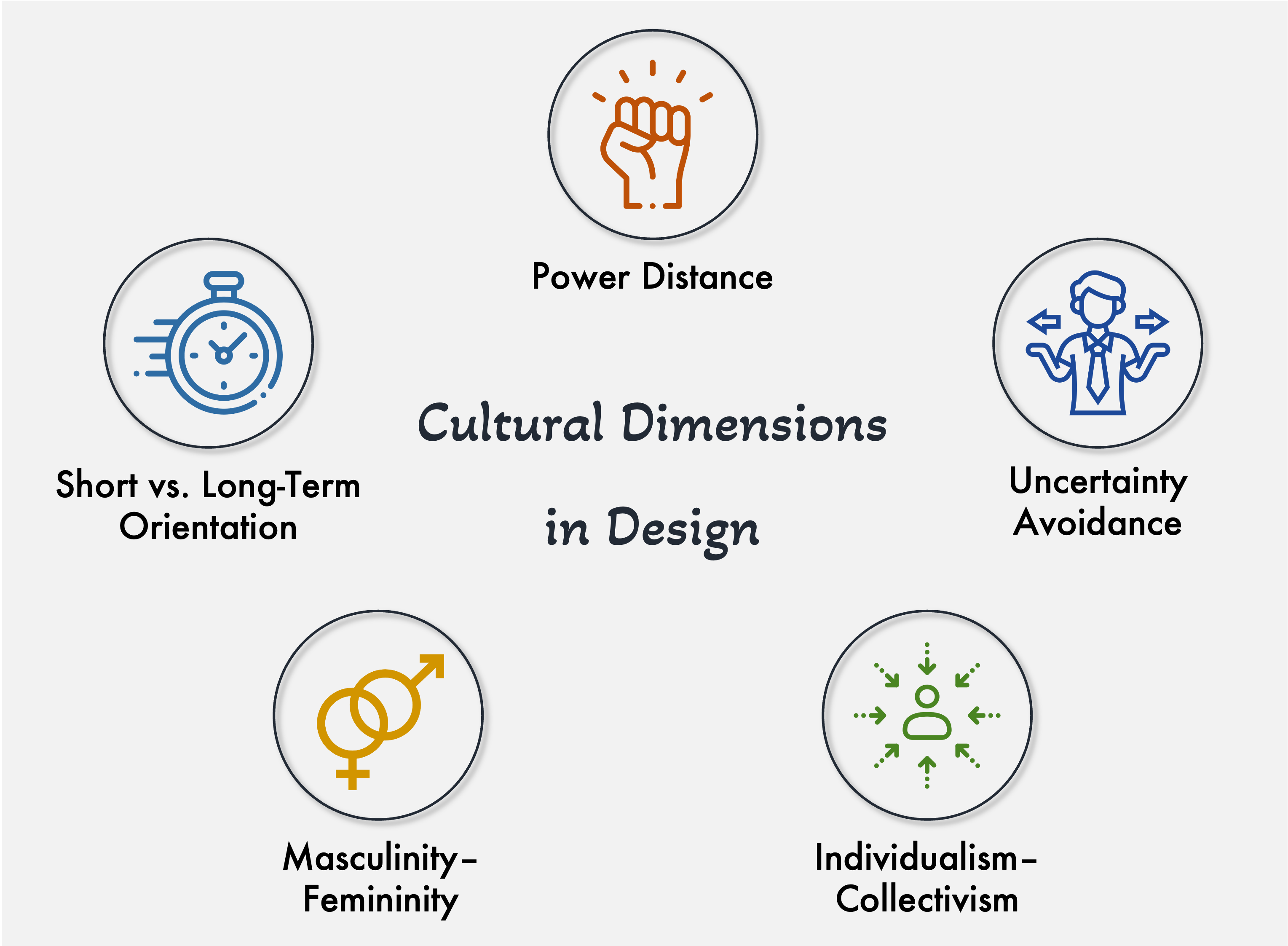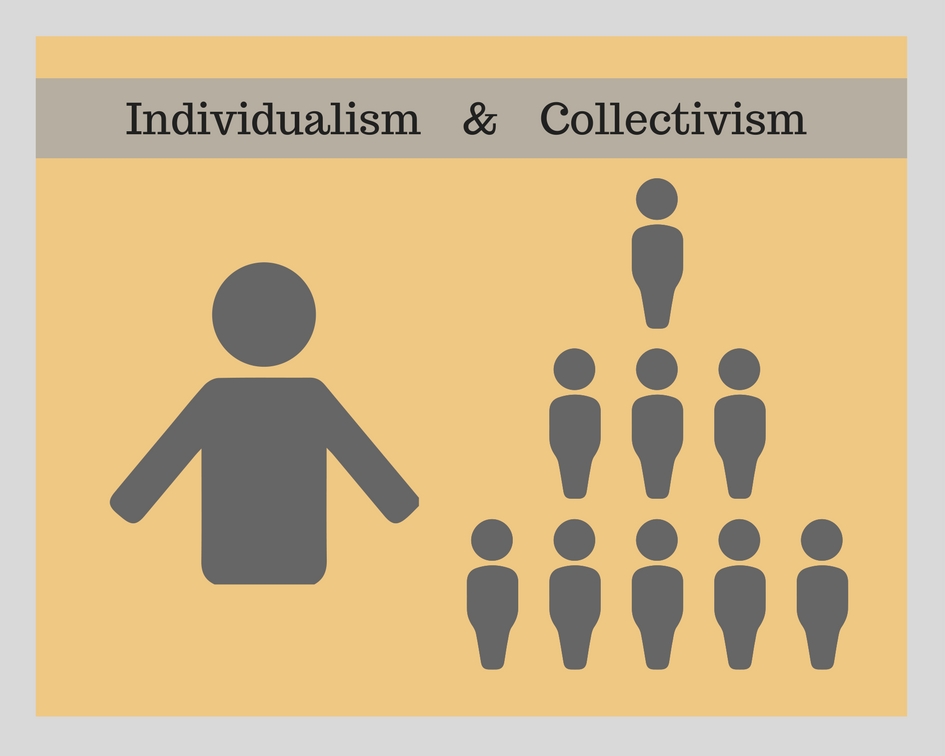It is becoming increasingly important for designers to have profound cultural insight and understanding regarding digital products and interfaces. With products and services crossing borders rapidly, keeping a broader user base in mind when working on design projects is critical. The cultural elements highly impact the digital experiences of people living in different regions of the world – or the lack thereof – in the design of any interface.
Therefore, a UX design team must not only understand but acknowledge and incorporate the cultural aspects in designs. This is where the concept of cross-cultural design becomes essential. When designers focus on cross-cultural communication and design, they better reach more users and meet their needs. Focusing on cross-cultural design benefits both the users and the organizations, as the quality of experience associated with any design is directly related to its success in the market.

Cultures and Design (Pexels)
In this article, we introduce the concept of cross-cultural design, followed by its importance and the influence of cultural elements on the design of products and services. We also discuss some principles and best practices for UX professionals working on design projects that cross borders.
Read along as we discuss this timely topic for designers all over the world.
Defining Cross-Cultural Design
Cross-cultural design, as the name indicates, is an approach to UI/UX design that goes beyond specific regions, cultures, and audience groups. It is a strategy built into design practices focused on various audience groups and people from different cultures and backgrounds. The cross-cultural design focuses on meeting audiences' needs by making cultural elements a vital part of the design process.
What is meant by cross-cultural design?
Cross-cultural design is the UI/UX design process informed by cultural knowledge and differences. When adopting a cross-cultural approach, designers incorporate local knowledge and the lived experiences of target audiences, thus making designs more inclusive and localized.
When working on a cross-cultural design, designing becomes an inclusive process, valuing the lived experiences of the end-users. This is where the users are not merely reduced to passive elements of the design process, waiting for designers to come and rescue them. Instead, their opinions and experiences are given due consideration, making them an essential part of the design process and empowering them in decision-making.

Cross-Cultural Design for UX Professionals (Toptal)
The Importance of Cross-Cultural Design
A cross-cultural approach to the design of products and services holds significant importance, both for the users and the organizations adopting this approach. Cross-cultural design matters even more with the increased reliance on digital technologies, where solutions cannot just be designed for one culture.
Why is cross-cultural design important?
Cross-cultural design is essential for many reasons, such as the following.
- Broadening the user base
- Increasing participation in design
- Making designs inclusive and accessible
There are several reasons why it is important to focus on cross-cultural design. Some of these are discussed below.
Broadening the user base
When designers refer to cross-cultural research and consider users' needs from different cultures, they make a strong case for their products and services in the highly competitive market. It is easy to design around the needs of the users that we are the most familiar with without considering other cultures and how people interact with designs in different parts of the world. A cross-cultural design and user research approach ensures that these hurdles are overcome effectively. With the help of a cross-cultural approach to design and research, UI/UX professionals think about the global audience, making their products useful for a broad range of audiences.
Increasing participation in design
Another critical reason to adopt cross-cultural design is that designers can increase users' participation. When the users are actively involved and engaged in the design process, the chances of producing valuable and usable interfaces are increased significantly. From user research to usability testing, users' participation in the design process is helpful in all design phases. Cross-cultural design practices ensure that the participants are from a small user base and represent all important audience groups.
Making designs inclusive and accessible
The ideas of diversity, equity, inclusion, and accessibility are becoming more and more critical in the design world. Focusing on supporting various languages, using symbols and icons with care, and being sensitive toward different cultures is now an essential part of the design process. This is one area where cross-cultural design projects can bring significant value. Additionally, to make design accessible for different audience groups, it is crucial to understand the local contexts and the issues individuals face as they interact with structures.
Influence of Culture on Design
When UI/UX designers focus on something other than the needs of different audience groups, whether in the research or development phase, they need to open themselves up to ideas from the actual users of products. Now that we've established the importance of cross-cultural design for the users, designers, and organizations, we can start thinking about ways different cultures can be accounted for in the design process. However, before we discuss some guidelines for the design of cross-cultural products and services, it is important to understand the influence culture has on designs.

The Influence of Culture on Design (Daevas)
Social and cultural factors significantly impact how people interact with designs in physical and digital environments. Any design's textual, visual, and interactive elements are vital in creating and delivering the right message. Similarly, when users interact with a design, the product or service's affordances and limitations are revealed. This means that the users, context of use, traditions, norms, and cultural values are equally important in meaning-making. The features of any design are only useful if the target audience interacts with it meaningfully. This is where cultural and contextual factors come into play.
Another important area where culture shows its presence is the aesthetic appeal of a design. To provide a good user experience, the design must be useful, usable, and aesthetically pleasing at the same time. This is where cross-cultural knowledge can help create designs that appeal to a global audience, ensuring that the design keeps potential users safe.
Cultural Dimensions in Design
One of the best ways to understand culture's influence on people's behaviors and attitudes is derived from Geert Hofstede's research. Hofstede, a Dutch social psychologist, presented the ideas of cultural dimensions to illustrate how people act as a cultural group. Designers must understand these dimensions for different cultures and cross-cultural experiences in user experience research and design.
What are some important cultural dimensions in design?
Five important cultural dimensions for design are as follows.
- Power distance
- Uncertainty avoidance
- Individualism-collectivism
- Masculinity-femininity
- Short vs. long-term orientation
A few researchers have extended Hofstede's dimensions over the years to provide detailed insights into cultures and people's behaviors. Here, we discuss the five fundamental dimensions introduced by Hofstede. These cultural dimensions are beneficial in cross-cultural research, as discussed below.

Cultural Dimensions in Design
Power distance
Power distance is one of the key dimensions that help understand different cultural backgrounds. Power distance refers to social inequality and the distribution of power and authority in a culture. Cultures with high power distance tend to be more authoritative, where participation in decision-making is unequal. When we look at it from the design perspective, people living in high power distance cultures would prefer to choose from existing solutions instead of coming up with innovative designs by acting as collaborators.
Uncertainty avoidance
Uncertainty avoidance is another important cultural dimension. This indicates how much people accept a new idea, product, or solution. Cultures with high uncertainty avoidance prefer familiar experiences over new ones. This dimension is significant for designers working on cross-cultural projects where creating a friendly experience becomes more important for certain groups of people based on their cultural and social backgrounds.
Individualism-collectivism
Individualism and collectivism are also some of the defining characteristics of different cultures. Individualistic cultures are where people prefer more autonomy and do not consider themselves to belong to a close social structure. The opposite is true for collectivist cultures, where people think and act more as a group. When designing experiences for the target audience, it is important to focus on the level of social engagement and the use of context in this way.

Individualist vs. Collectivist Cultures (Difference Between)
Masculinity-femininity
The aspects of masculinity and femininity in culture also significantly define people's experiences when interacting with a design. Cultures with a high score on the masculinity dimension are the ones where gender roles are strictly limited, and the gender gap is higher than in cultures with a low score on the masculinity dimension. This dimension also overlaps with the power distance dimension, and using this knowledge, design processes, and decision-making can be made more informed.
Short vs. long-term orientation
The last dimension essential to understanding culture's influence on people's behaviors and interactions is short-term vs. long-term orientation. Long-term orientation indicates the extent to which people look for the future, while short-term orientation focuses on the present, valuing quick results. Designers can seek help from this knowledge and ensure that the users get the results when and how they desire, thus meeting their expectations.
Principles of Cross-Cultural Design
Now that we've discussed the significance of cross-cultural design and also gone over the vital cultural dimensions necessary to understand different cultural backgrounds, it is time to move on to the practical aspects of the concept. One of the most important things to consider when working with global designs is that one solution does not – and cannot – work for all users in all contexts. Although cross-cultural design has some basic principles, it is always critical to understand the specific needs of users and the contexts in which they interact with designs.
What are the key principles of cross-cultural design?
- Pay attention to language and translation
- Focus on colors, symbols, and visual aspects
- Go beyond mere translation and colors
- Value the local knowledge and context of the use
- Think of users as co-designers
Some of the most important UX design principles to remember when working on cross-cultural design projects are as follows.
Pay attention to language and translation.
When products and services cross borders, language is the first highlighted aspect. People with varying cultural backgrounds often speak different languages, and it is vital to account for such differences. It is understandable that, when working on prototypes, designers might prefer a particular language over others. However, user research and testing phases can reveal the need for translation and supporting multiple languages. Therefore, designers should always focus on flexible designs that can help various languages to meet this fundamental need of users living in different regions of the world.
Focus on colors, symbols, and visual aspects
Along with textual and linguistic elements, it is also critical for designers to focus on the visual aspects of a design. Colors, symbols, and fonts significantly impact the overall user experience, and these elements must be addressed when designing for a global audience. These visual elements are not mere add-ons to the content. Instead, these are equally important, particularly regarding a digital product or service. Working on visual aspects can be more tricky, given that organizations have their own brand identities and visual languages. Therefore, designers must consider all these aspects when working on cross-cultural designs.
Go beyond mere translation and colors
It is elementary for UX professionals conducting cross-cultural research to develop a myopic view focusing only on language, translation, colors, and symbols. In such cases, the concepts of localization and globalization are reduced to mere translations, thus leaving significant gaps in the design. This is where developing a broader understanding of cross-cultural design is extremely important. Design systems are much more than translations of elements. Designers should always consider creating international user interfaces so that no single language, region, or standard becomes dominant.
Value the local knowledge and context of use
Developing a thorough understanding of their values, attitudes, norms, and traditions is vital when working with different cultures and people from different contexts. Cultural differences influence how people think and make a significant part of their knowledge. These local knowledge networks must be addressed when designing for a global audience. Additionally, when designers pay attention to people's local knowledge and lived experiences, they better understand the context in which users interact with interfaces. These aspects help create effective design solutions.
Think of users as co-designers
Another essential principle of cross-cultural design is considering users as co-designers and collaborators in the decision-making process. This requires a change of attitude on the part of designers, where they no longer think of users as waiting to be saved or rescued. Instead, users' knowledge now becomes a part of the design process. Information from different cultures can add value to the design of physical and digital products, making the design valuable and usable.
ROI of Localization and Cross-Cultural User Experience Design
Regarding any UI/UX design practice, the question of return on investment (ROI) is almost always brought up. Designers are often asked to justify the importance of exercise in their research and development phases to ensure that it is helpful for the business. The same is true for cross-cultural design, where executives are interested in the value brought to the industry due to this approach. Understanding cultural differences and meeting the needs of people from different regions does not justify adopting this approach to design.
Calculating ROI for cross-cultural user experience design is complicated, and traditional objective methods cannot be fully applied here. Instead, designers and researchers must focus on the long-term impacts of such design practices. For example, making room for inclusion and supporting multiple languages in a design might only gradually increase the number of users. However, if the performance of a design is evaluated over a long period, the results would benefit the users and the organization.
Another important aspect to consider while considering the ROI of localization and cross-cultural design is the cost involved in the process. Several hidden costs are involved in the process of localization and globalization, such as the time required to gather valuable data from the end users and the diversity needed within the design team. The designers also have to educate themselves on various levels to be sensitive to different cultures and appreciate them while focusing on the target audience's needs. All these factors add to the quality of the end product, ensuring success in the longer run.
Tips for Cross-Cultural Design
Working on the design of cross-cultural products and services can be challenging, particularly when the designers need to know how and where their products will be used. On the one hand, inclusion is essential to create a successful cross-cultural design. On the other hand, it is also necessary to use the resources smartly and carefully so the design yields some return on investment.
What are some tips and best practices for cross-cultural design?
Some of the best practices for cross-cultural design are as follows.
- Use plain and simple language
- Create adaptive interfaces
- Value the iterative design process
- Refer to participatory design and research
Some of the essential tips for designers working on cross-cultural solutions are discussed below. These tips cover many areas and can help care for a global audience's critical needs.
Use plain and simple language
The best way to ensure uniformity and consistency in cross-cultural design is to use plain and straightforward language when creating content for any scenario. Using simple language and avoiding longer text strings with complicated sentences is always helpful when accounting for different languages. When UX writers and designers adhere to clear and concise writing principles, they make their designs easily transferable to other cultural contexts.
Create adaptive interfaces
Another critical aspect to take care of when designing products for a global audience is to ensure that the designs are culturally responsive, thus providing seamless digital experiences. Culturally responsive experiences are the ones that change for the needs of the target audience, such as changing currency and measurement units. To look at a little complicated example, think of a text expansion feature. In such a case, designers need to understand and cater to the needs of people working with different languages. A text expansion tool for multiple script systems needs to be adaptive and responsive to a greater degree. Therefore, text expansion should be built on better-trained models that are more inclusive.
Value the iterative design process
The entire design practice is iterative, where designers go back and forth between ideas, gather user feedback, and ensure that usability issues are handled at each stage. The same holds for a cross-cultural design system. It is essential to get regular user feedback and be open to new ideas, so the designers can leave their biases aside and value the local and contextual knowledge.
Refer to participatory design and research
One of the best ways to incorporate a cross-cultural perspective in the design field, and to account for diverse cultures when creating solutions for the target audience, is to adhere to the principles of participatory design and research. This approach ensures that the users are given more autonomy in the design process and that their voices are heard and valued in creating products and services.
Conclusion
UI/UX designers need to consider the aspects of localization and internationalization when working on products and services, particularly those in the digital environment. As websites and mobile applications are used by a wide range of users worldwide, it is essential to understand the cultural elements impacting their experiences and consider these design aspects.
In this article, we covered the basic concepts of cross-cultural design. The guidelines and best practices shared in the above sections will help you understand the importance of cross-cultural design and how this approach can be incorporated into your design processes.
Jun 7, 2023
